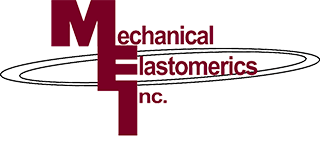Drive Details
Because of the broad scope of endless belt application and the need for specific drive properties, a complete job description can not be overemphasized when requesting information.
Listed below, in outline form, are major drive categories and details essential to job description. This outline can serve as a guide in discussing your requirements with our representatives or be a useful tool in phrasing written requests for information.
TYPE OF DRIVE (specify which)
- Individual belt drive.
- Group belt drive. (Assumes more than one belt on common shafts but having individual take-up.)
a) Specify number of belts in group.
b) Describe method of belt guidance. - Belt set drive. (Assumes more than one belt on common shafts but having common take-up or no take-up.)
a) Specify number of belts in set.
b) Describe method of belt guidance.
NOTE: Indicate approximate belt tension allowable by machine design. Information essential when belts run in sets.
DRIVE ARRANGEMENT (specify which)
- Open
- Serpentine
- Crossed
DRIVE DETAILS (specify all)
- Pulley diameters.
a) Indicate drive and driven. - Size of pulley crown.
- Pulley RPM (with specific diameter) or feet per minute belt speed.
- Approximate horsepower.
NOTE: For fractional horsepower, list torque to be delivered to driven pulley.
LENGTH ADJUSTMENT (specify which)
- Length adjustment available.
a) Specify actual drive circumference with take-up in minimum length position and in maximum length position. - Fixed centers having no adjustment.
a) Specify actual drive circumference.
WIDTH ACCOMMODATION (specify which)
- Open pulley.
a) Width of pulley face. - Flanged pulley.
a) Measurement between flanges.
SPECIFIC PROPERTIES
While the preceding has dealt primarily with basic mechanical design, complete job description should include a brief summary of work to be accomplished with consideration being given to desired specific properties. In broad scope, the following should be reviewed.
- Positive drive.
- Clutch type action with slippage.
- Any mechanical reason for specific belt thickness.
- Food handling.
- Special antistatic requirements.
- Special non-marking requirements.
- Abnormal oil or chemical resistance properties.
- Abnormal temperature conditions.
(List specifically with duration of temperature.) - Unusual drive hazards or peculiar belt properties.
